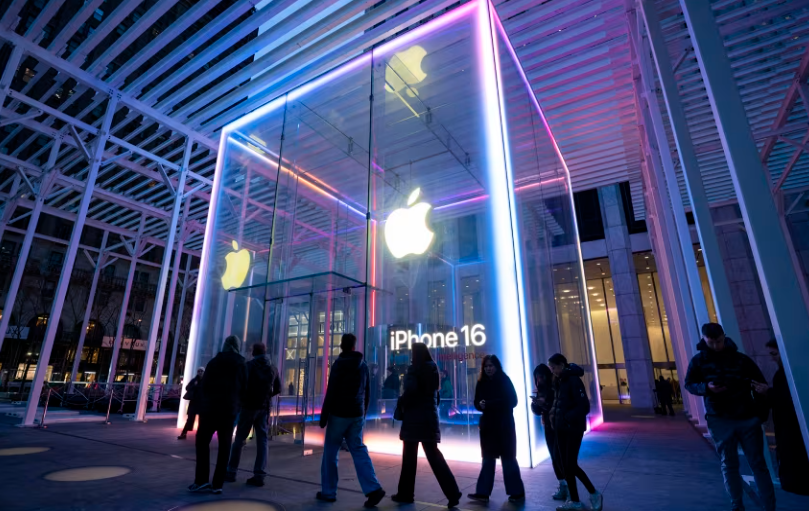Apple’s revenue forecast for the September quarter beat Wall Street expectations, fueled by a 13.5% surge in iPhone sales, even as U.S. tariffs threaten $1.1 billion in added costs.
WEBDESK — Apple on Thursday projected stronger-than-expected revenue for the current quarter, lifting investor confidence even as CEO Tim Cook warned that U.S. tariffs could cost the company an estimated $1.1 billion in the coming months.
Shares of Apple Inc. (AAPL.O) rose in after-hours trading following the upbeat forecast, signaling optimism in the tech giant’s resilience amid global economic headwinds and ongoing trade tensions.
Driven by a 13.5% jump in iPhone sales, Apple reported its biggest quarterly revenue beat in over four years, according to data from LSEG. Cook attributed part of the sales boost to customers accelerating purchases ahead of anticipated tariff-related price hikes, particularly in the late spring.
“We’re seeing strong demand, especially in the Americas and China,” Cook said on a call with analysts. “Some of this is clearly customers buying early to avoid potential increases from tariffs.”
Apple said Americas sales rose 9.3%, reflecting broad-based strength across hardware and services. In China, a region where Apple has recently faced intensified competition, the company saw renewed momentum, thanks to strong Mac sales and iPhone upgrades.
Big quarter for the iPhone
The iPhone generates more revenue than any other Apple product, making it the company’s most important business in Wall Street’s eyes. Apple CEO Tim Cook said on a call with analysts that the company set a June quarter record for iPhone sales, growing 13% year-over-year.
But Trump’s whipsaw tariff policies have required Apple and other tech giants to rethink how they manufacture and ship devices like smartphones and computers. Investors are also eager for Apple to make a bigger splash in artificial intelligence as other tech behemoths like Google, Meta and Microsoft push forward.
Apple shifted most production of US-bound iPhones from China to India earlier this year to avoid Trump’s tariffs. Smartphones were exempt from the previous reciprocal levies on China that would have increased the tariff rate to a staggering 145%, but Trump has also said companies like Apple and Samsung could face a 25% tariff unless they make their smartphones in the US.
A temporary trade deal between the two powerhouse economies will keep tariffs at 30% until August 12, while Trump threatened India with tariffs as high as 25% earlier this week.
Despite the tariff burden, analysts remain bullish on Apple’s global growth strategy and ecosystem expansion.
The company is expected to reveal new devices this fall, including an iPhone refresh and possibly updated wearables, which may further drive demand in Q4.


